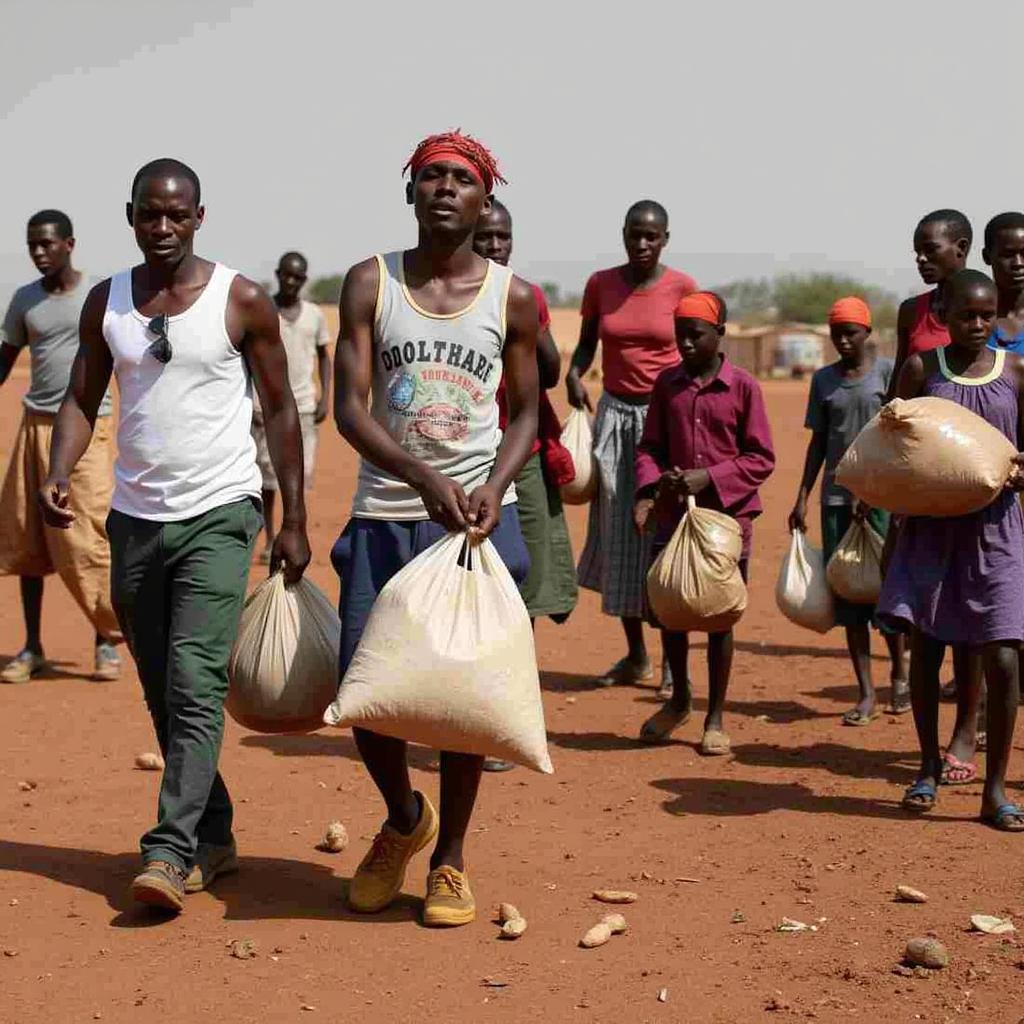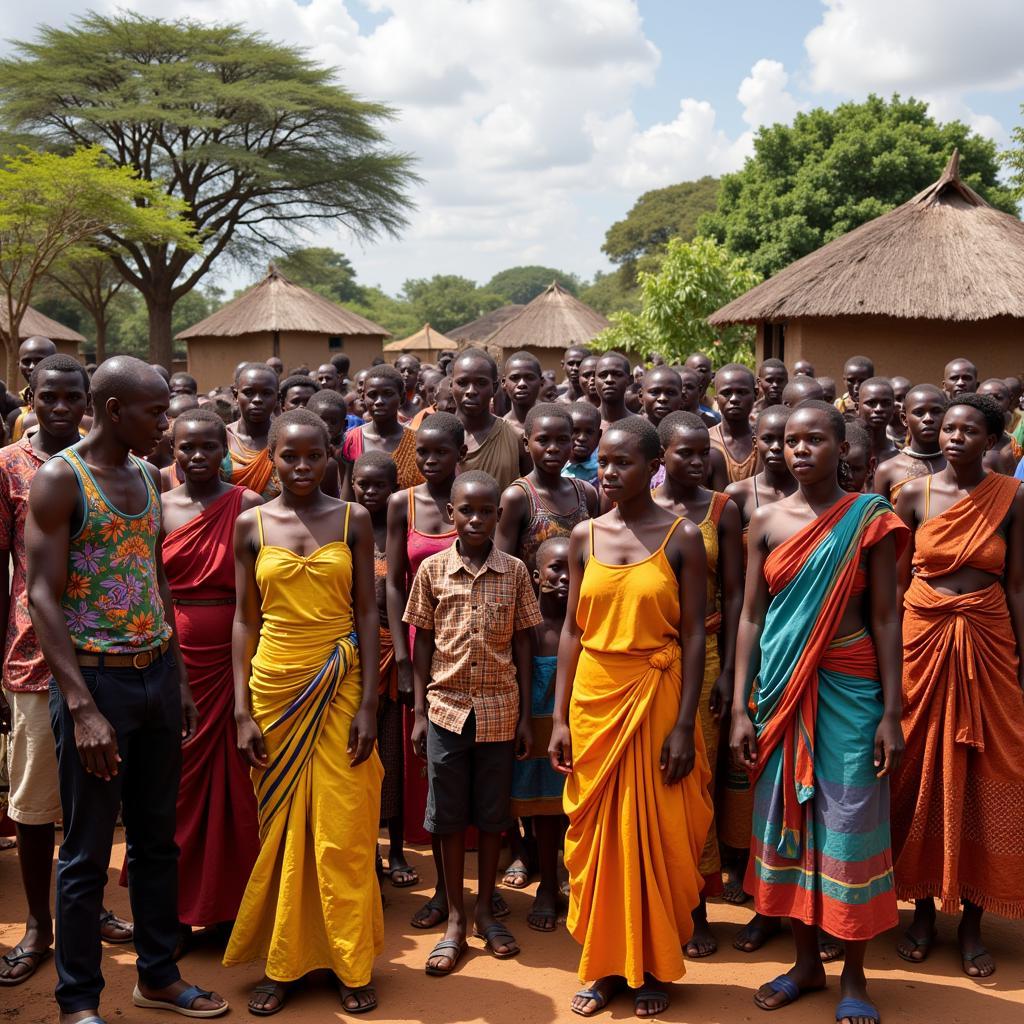The Haunting Image: Deconstructing the “African Baby and Vulture” Narrative
The phrase “African Baby And Vulture” often evokes a specific, disturbing image: the Pulitzer Prize-winning photograph by Kevin Carter, taken during the 1993 famine in Sudan. This image, often misrepresented and misunderstood, became a symbol of despair and sparked a global conversation about the role of photojournalism, ethics, and the complexities of representing suffering. This article delves into the story behind the photograph, its impact, and the broader issues it raises about famine, aid, and representation of Africa.
Unpacking the Photograph: Context and Controversy
The photograph, showing a young, emaciated child slumped over, seemingly stalked by a vulture, quickly became an iconic image of the famine ravaging Sudan. It symbolized the helplessness of the victims and the indifference of the world. The image instantly sparked outrage and debate, with many questioning Carter’s actions. Why didn’t he intervene? Was he exploiting the child’s suffering for a photograph? The ensuing controversy contributed to Carter’s tragic suicide a few months later.
However, the full story is more nuanced. Reports later emerged suggesting that the child was actually on their way to a feeding center and the vulture was waiting for scraps of food, not the child. While this doesn’t negate the suffering depicted, it does challenge the simplistic narrative of apathy and predation that initially surrounded the image.
Beyond the Single Frame: The Larger Narrative of Famine in Africa
The “African baby and vulture” photograph, though powerful, risks reducing the complex issue of famine in Africa to a single, sensationalized image. Famine is not a singular event, but a recurring crisis with deep-rooted causes, including political instability, drought, conflict, and economic inequality. Focusing solely on the image overlooks the larger political and socio-economic factors that contribute to these crises.
 Famine Relief Efforts in Sudan with Aid Workers
Famine Relief Efforts in Sudan with Aid Workers
Furthermore, portraying Africa solely through the lens of suffering perpetuates harmful stereotypes and overlooks the resilience, strength, and diversity of the continent. It’s crucial to move beyond singular images of despair and engage with the multifaceted realities of life in Africa.
Challenging the Stereotypes: Reframing the Narrative of Suffering
The “African baby and vulture” photo became emblematic of a broader problem: the tendency to portray Africa as a continent defined by poverty and suffering. While acknowledging the realities of hardship is important, it’s equally crucial to showcase the agency, creativity, and resilience of African people. The narrative needs to shift from one of helplessness to one of empowerment.
What is the real story behind the “African Baby and Vulture” photo?
The photo was taken during the 1993 famine in Sudan. It depicts a starving child slumped over, with a vulture lurking nearby. While the image sparked controversy about the photographer’s role, it also highlighted the devastating impact of the famine.
How did the photo impact public perception of Africa?
The photo reinforced existing stereotypes of Africa as a continent of suffering. While the image undeniably captured a moment of crisis, it also contributed to a simplified and often dehumanizing narrative about the continent.
What can we learn from the controversy surrounding the photograph?
The controversy highlights the ethical dilemmas faced by photojournalists, particularly when documenting suffering. It also underscores the importance of contextualizing images and avoiding simplistic narratives that can perpetuate harmful stereotypes. african child photo
Why is it important to understand the context of the photo?
Understanding the context helps us move beyond the initial shock and engage with the complexities of the situation. It allows us to see the child not just as a victim, but as an individual within a larger political and socio-economic context.
How can we avoid perpetuating harmful stereotypes about Africa?
We can challenge stereotypes by seeking diverse sources of information, supporting African voices and narratives, and focusing on stories of resilience and agency alongside those of hardship.
In conclusion, the “African baby and vulture” photograph serves as a stark reminder of the devastating impact of famine and the complex ethical questions surrounding photojournalism. While the image itself remains powerful and disturbing, it is crucial to understand its context and avoid perpetuating harmful stereotypes about Africa. The continent deserves to be represented in its full complexity, with stories of strength and resilience alongside those of hardship.
FAQ
- Who took the “African baby and vulture” photograph? Kevin Carter
- When was the photograph taken? 1993
- Where was the photograph taken? Sudan
- What was the context of the photograph? The 1993 famine in Sudan.
- Why was the photograph controversial? Many questioned Carter’s decision not to intervene.
- What happened to Kevin Carter? He committed suicide a few months after winning the Pulitzer Prize for the photograph.
- What can we learn from this image? The importance of context and the dangers of simplistic narratives.
You can find more information on related topics on our website, including articles on african child photo.
For support or further inquiries, please contact us at +255768904061, email [email protected], or visit our office in Mbarali DC Mawindi, Kangaga, Tanzania. Our customer service team is available 24/7.

